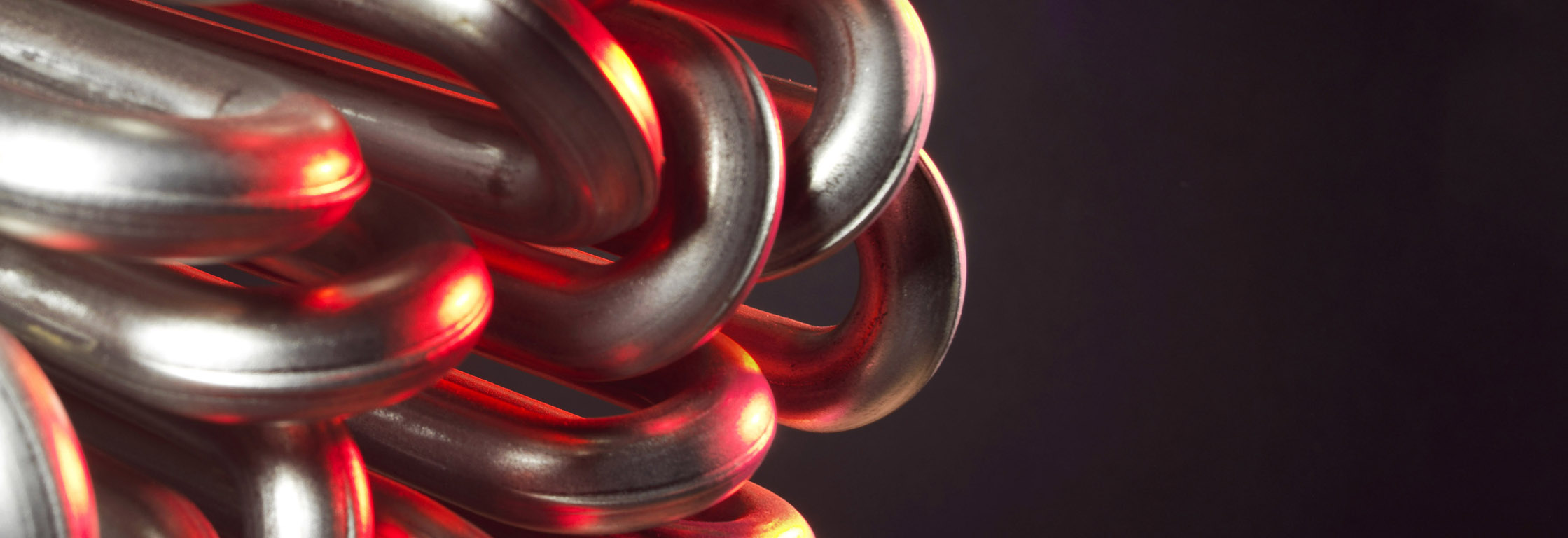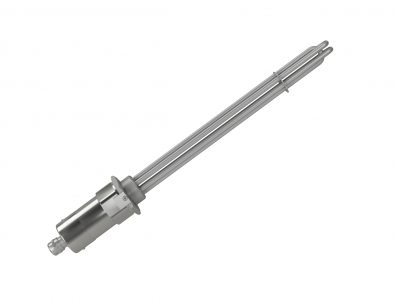
Anti-condensation self-regulated immersion heaters
Product overview
- Power range from 50 to 250 W
- 1PH or 3PH voltage supply
- Heating length up to 3 m
- In compliance with the ATEX / IECEx regulation
Advantages
- Large range of materials and options according to customer process and application
- Benefit from CETAL’s 50 years of experience as designer and manufacturer!
- The end-to-end control of the design and production chain allows us to deliver a product which suits your process perfectly
Operating conditions
- Hazardous areas (ATEX/IECEx) and NEC 505
- Onshore / Offshore environment
- Salt atmosphere
Oil
- Machine oil SAE 10, 30, 40 & 50, max load 2.0 – 3.5 W/cm², material: 316L
- Mineral oil , max load 0.5 – 3.5 W/cm² acc. to temp, material: 321, 316L
- Lube oil, max load 2.3 W/cm², material: 321, 316L
Technical description
The Watt density, tube diameter and the tube sheath are chosen to optimize the reliability and robustness (corrosion, temperature) of CETAL equipments.
Technologies
- Tubular heating element
Tube diameter & material
- Tube diameter: 6.5 / 8.5 / 10 / 13.5 / 16 mm
- Tube material:
- Stainless steel: AISI 321 (1.4541) / AISI 316L (1.4404) / AISI 309 (1.4828)
- Others: Incoloy 800 (1.4876) / Incoloy 825 (2.4858) / Inconel 600 (2.4816)
- Tube type: sealed tube
Manufacturing
- 100% of the components come high quality supplier from Europe
- 100% manufacturing in CETAL factory

- Connection terminals
- Tube
- Insulation : magnesia oxyde (Mg O), to secure optimized heat transfer and electrical insulation.
- Resistance wire: Made of Nickel Chrome 80/20, it is the active part of the heating element (Joule effect)
- Cold length
- Sealing material: Keeps out external moisture. Different types (silicon, resins, cement) are used depending on the industrialapplication, the external medium and temperature.
- Output insulation: Made of steatite ou corundum, it provides dielectric insulation (creepage distance, distance in the air).
- Self-regulation of the heating element temperature through limitation of the Watt density
- Supply voltage 230 V 1PH, 400 V 3PH, others on demand
- Corrosion-resistant AISI 321 stainless steel tube material (1.4541)
- M45 screw plug with Ø 45 seal, brass or stainless steel
- Working pressure < 8 bars (not DESP-relevant)
- ATEX/IECEx connection housing, AISI 316 stainless steel (1.4404) or nickel-plated brass, IP 66 protection rating
- Connection through M4 threaded rods (2 accessible terminals)
- Horizontal mounting
- Protection and marking: II 2 G Ex d IIC T1 to T3 Gb IP66
- Option: ATEX cable gland, nickel-plated brass, ADL1F ISO M20 type
- T4 and T3 temperature range
- B135 type ATEX immersion heater
- Ambient operating temperature
- T4 (135 °C): from – 50 °C to + 40 °C
- T3 (200 °C): from – 50 °C to + 60 °C
- T3 and T2 temperature range
- B200 type ATEX immersion heater
- Ambient operating temperature
- T3 (200 °C): from – 50 °C to + 40 °C
- T2 (300 °C): from – 50 °C to + 60 °C
- According to EC-type examination certificate LCIE 07 ATEX 6004 X
- IECEx Certificate of Conformity LCIE 11.0017 X
- c CSA us
- EAC & CU TR (former GOST)
![]()
Electrical tests
- Power test by cold resistance measurement. Allowed tolerance: -5% and +10% of the nominal resistance value.
- Insulationtest, direct voltage 500 V, mini cold value is > 100 Megohms
- Dielectric test, (2U + 1000 V) x 1,2 during 1 second
- The stray current and the hot dielectric rigidity can be measured on a sample at operating temperature (on request).
- 100% of the heating elements are tested before shipment (final control)
Mechanical tests
- Visual inspection
- X-ray test (if required)
- Liquid penetrant test
- Pressure control test
Dimensional test
- Critical dimensions are tested

